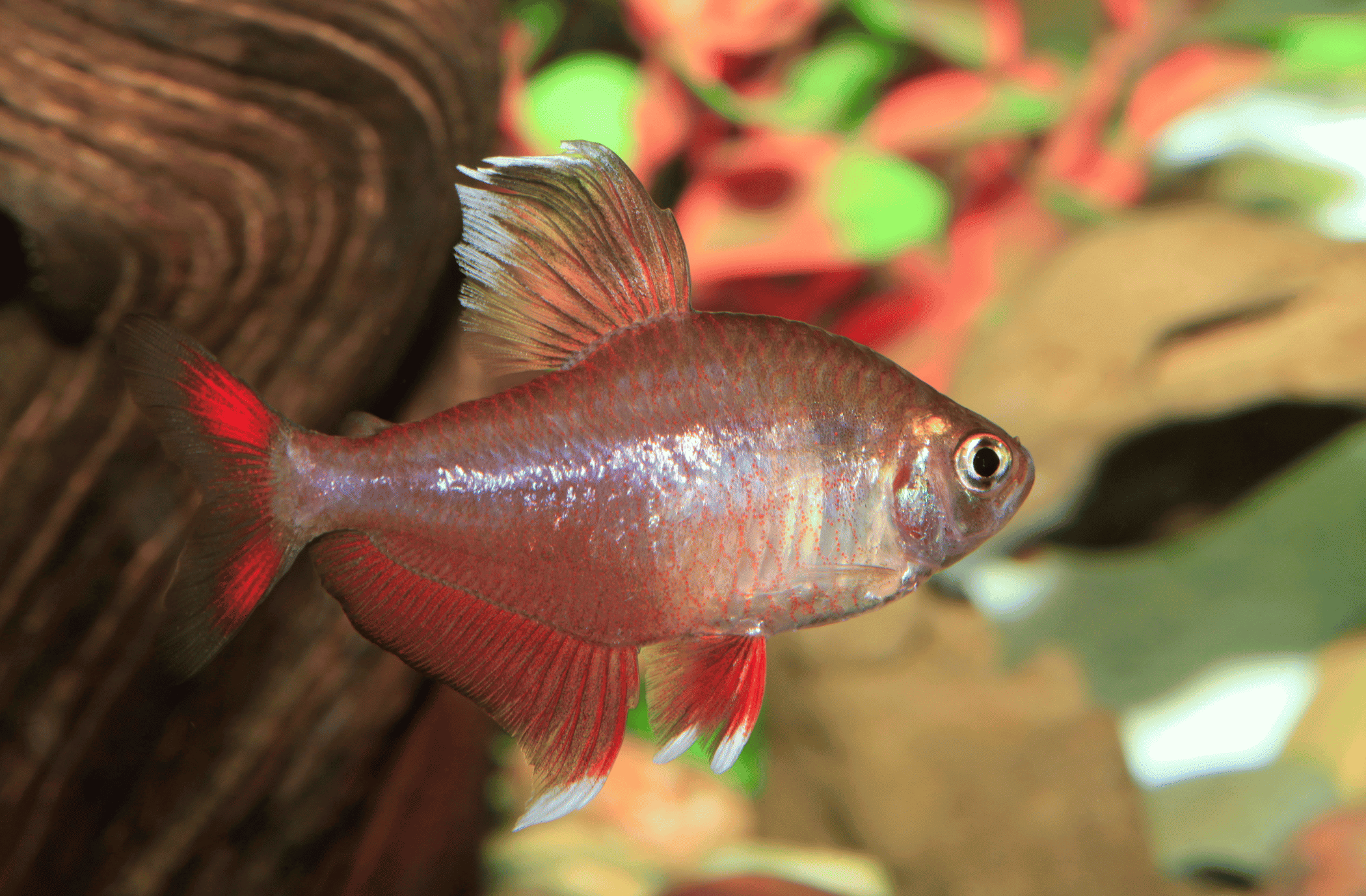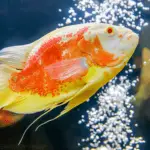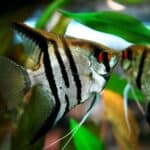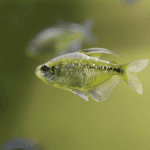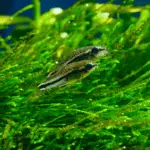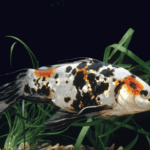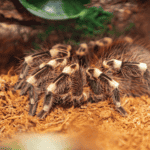Red Tetras are a fascinating group of small, colorful fish that have captivated the interest of both novice and experienced aquarium hobbyists. These vibrant freshwater fish belong to the Characin family and are native to the rivers and tributaries in South America. With their striking colors and intriguing behaviors, Red Tetras have earned a special place in the hearts of fish enthusiasts around the world.
There are several species of Red Tetras, each boasting its unique pattern and coloration. They are known for their versatility and adaptability, making them an excellent choice for various aquarium setups. These peaceful, schooling fish are typically found in densely planted, slow-flowing waters with plenty of hiding places. Their hardiness, ease of care, and social nature make Red Tetras a popular choice among aquarists of different experience levels.
Key Takeaways
- Red Tetras are small, colorful fish that are popular among aquarists for their striking appearance and adaptability
- These fish are native to South American rivers and prefer densely planted, slow-flowing environments
- Multiple species of Red Tetras exist, each with unique patterns and colors, providing variety for aquarium enthusiasts
Appearance and Identification
Red Tetras are small, brightly colored freshwater fish that are very popular among aquarists. Their eye-catching appearance makes them an attractive addition to any aquarium. In terms of size, they usually grow to about 1.5 to 2 inches in length, making them suitable for smaller tanks.
When it comes to their appearance, Red Tetras have a unique color pattern. Their bodies are mostly silver, with a vibrant red stripe running horizontally from their head to their tail. Some individuals may have a more pronounced reddish hue, while others display a more subdued coloration. Additionally, their fins usually have a black edge, creating a striking contrast against their silver scales.
Another characteristic feature of Red Tetras is their body shape. They have compressed, slightly elongated bodies with a rounded head and moderately sized fins. This streamlined shape allows them to move swiftly through the water and helps them navigate their surroundings with ease.
One way to identify Red Tetras is by their eyes, which are relatively large and have a distinctive black stripe running through them. This feature not only gives them an interesting appearance but also plays a crucial role in their ability to navigate their environment. Overall, the unique combination of features makes Red Tetras easy to distinguish from other fish species in an aquarium setting.
It’s essential to provide Red Tetras with an environment that mimics their natural habitat for their overall health and well-being. This includes having a densely planted aquarium with plenty of hiding spots, as well as good lighting and water quality. By creating a suitable environment for them, we can ensure that these beautiful fish will thrive and display their vibrant colors to their full potential.
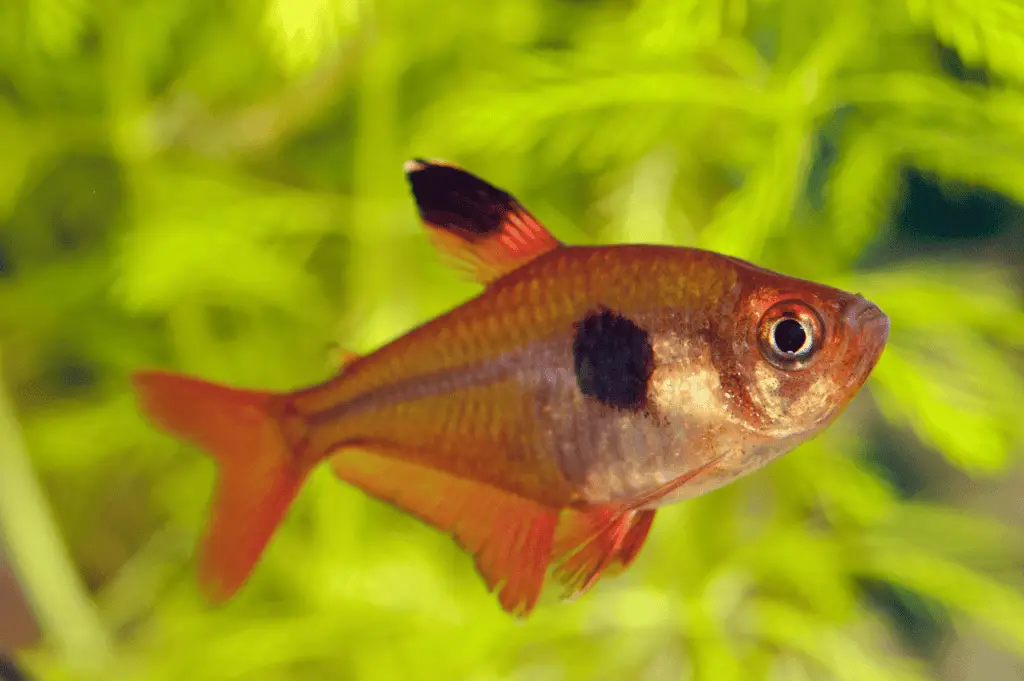
Habitat and Distribution
Red Tetras, scientifically known as Hyphessobrycon sweglesi, are native to South America, specifically the Orinoco River Basin in Colombia and Venezuela. In these regions, they typically inhabit slow-moving, shallow waters with plenty of vegetation. In this section, we will discuss the specific characteristics of their habitat and distribution.
In the wild, Red Tetras are commonly found in tributaries, streams, and small rivers. These environments provide two essential elements for their survival: abundant plant life and a slow current. The dense vegetation offers shelter from predators, while the slow-moving water ensures a stable, oxygen-rich environment. Some of the typical plants found in their natural habitat include Echinodorus and Hygrophila species.
The water conditions in their habitat are characterized by:
- Temperature: 22-28°C (72-82°F)
- pH: 6.0-7.5
- Soft to moderately hard water
Red Tetras are schooling fish, so they are usually found in groups numbering 10 or more. This behavior not only provides them with a sense of security, but it also helps them find food more effectively. Their diet mainly consists of small insects, crustaceans, and plant matter.
Although these fish are primarily wild-caught, their popularity in the aquarium trade has led to them being bred in captivity. Therefore, some of the specimens available for purchase are likely to be captive-bred, which has helped alleviate pressure on wild populations.
In summary, Red Tetras are native to South America, predominantly found in slow-moving, lushly planted water bodies. Their habitat consists of shallow streams and rivers with dense vegetation and specific water conditions. These fish are schooling creatures, relying on their group both for safety and to find food. The trade of captive-bred Red Tetras has contributed to conservation efforts, helping to maintain sustainable population levels in the wild.
Related: Overview of Diamond Tetras: Essential Care and Compatibility Guide
Diet and Feeding Habits
Red Tetras are omnivorous fish, meaning they consume both plant and animal-based food sources. In the wild, they typically feed on small insects, crustaceans, and detritus. In the home aquarium, it’s important for us to provide a balanced diet that mimics their natural feeding habits.
We recommend using high-quality flake or pellet food specifically formulated for tropical fish as the staple of their diet. This ensures they receive all the necessary nutrients, minerals, and vitamins to maintain optimal health. To enhance the variety in their diet, we can also offer them live or frozen foods such as brine shrimp, daphnia, and bloodworms. This not only adds excitement and stimulation during feeding but also helps in maintaining their vibrant colors.
It’s important to feed our Red Tetras in small portions two to three times per day, making sure they can finish the food within a few minutes. Overfeeding can lead to poor water quality and health issues. Additionally, uneaten food can easily accumulate at the bottom of the tank, so it’s wise to remove any leftovers shortly after feeding.
Incorporating some plant-based food options, such as spirulina flakes or blanched vegetables, can also be beneficial for the Red Tetras. This will provide them with essential fibers and contribute to a more balanced diet. However, it’s crucial not to overdo it, as these fish still need a solid portion of protein in their diet.
By offering a diverse and balanced diet, we can help our Red Tetras thrive in our home aquariums. Monitoring their feeding habits and adjusting the types and amounts of food can lead to optimal health and stunning coloration that will captivate both our eyes and those of other enthusiasts.
Behavior and Social Structure
Red Tetras, also known as Bleeding Heart Tetras, are a schooling fish species that have been widely popular among aquarium hobbyists. In this section, we will discuss their behavior and social structure.
Their peaceful nature makes them an ideal choice for community tanks. They are known to form stable social groups and pay little attention to other tankmates. This harmonious nature ensures a peaceful environment for all the aquatic life in the ecosystem.
Red Tetras are not strong swimmers, so they prefer the middle and lower sections of the tank, avoiding strong currents that may tire them out. They like to have plenty of cover in the form of plants and driftwood to mimic their natural habitat. This way, they feel secure, and it also provides them with the hiding spots they seek during times of stress.
Feeding behavior is quite interesting in Red Tetras. They are omnivorous, feeding on a combination of plant and animal matter. We often observe them browsing on algae and opportunistic grazing on any available food source. Feeding them a balanced diet, like high-quality flake food and frozen or live foods, such as brine shrimp and bloodworms, is important to maintain their vibrant color and overall health.
These fish are diurnal, meaning they are most active during the day and tend to rest at night. They have a unique way of establishing dominance – adopting a clearly visible horizontal swimming posture towards each other. However, this display is rarely escalated to physical aggression, as they are generally tolerant of one another.
In summary, Red Tetras’ social structure and behavior make them a great addition to a community aquarium. Their peaceful demeanor, schooling nature, and beautiful appearance are sure to delight any aquarium enthusiast, both novice and experienced alike.
Breeding and Reproduction
We find that breeding Red Tetras can be an exciting and rewarding endeavor for aquarium hobbyists. The process begins with preparing the breeding tank for optimal conditions. Make sure the tank contains soft, slightly acidic water with a temperature between 75°F and 81°F. We recommend using peat-filtered water and providing plenty of dense plants for the fish to hide and lay eggs in.
It is essential to select healthy and mature Red Tetras for breeding. Providing an excellent diet with live foods such as brine shrimp and Daphnia, as well as high-quality flakes, will ensure the fish are in optimal condition. Introducing the breeding pair into the tank during the evening will reduce stress and increase the chances of successful spawning.
During the spawning process, the female Red Tetra will release her eggs near the plants, where the male will then fertilize them. This process can continue for a couple of hours, during which the pair may lay several hundred eggs. We advise removing the adult fish from the breeding tank as soon as the eggs are laid to prevent them from consuming their offspring.
Eggs will usually hatch within 24 to 36 hours, depending on the temperature and water conditions. We suggest keeping the tank in a dark, quiet environment to encourage hatching. Once hatched, the fry will be barely visible and will require infusoria or other microscopic organisms for their initial food source. After a week, they may graduate to finely ground flake food or newly hatched brine shrimp.
As the fry grow and become more mobile, we recommend regular water changes and maintaining ideal water conditions in the breeding tank. With proper care, the young Red Tetras will mature into colorful and active fish, ready to be transferred to the main aquarium or offered to other hobbyists.
Related: All About the Rummy Nose Tetra: Care, Setup, Diet, Breeding & More
Health and Lifespan
Red Tetras are generally hardy and adaptable fish, making them popular among aquarists. Our focus on providing a suitable environment, a well-balanced diet, and monitoring water parameters will ensure their health and longevity.
One essential factor for these fish is maintaining good water quality. We must have a stable temperature between 75-80 degrees Fahrenheit and a pH between 6.0-7.5. We should regularly monitor ammonia, nitrite, and nitrate levels to avoid unwanted fluctuations that could harm the fish.
Another key to their health is providing a balanced diet. Red Tetras will thrive when we feed them a variety of high-quality flakes, pellets, and frozen or live foods such as brine shrimp, daphnia, and bloodworms. We must avoid overfeeding, as it can lead to obesity and water quality issues.
Stress is another factor to consider. Red Tetras prefer a heavily planted tank with hiding spots and dim lighting, as it mimics their natural habitat. We should also maintain a peaceful community by avoiding aggressive tank mates, as this could lead to stress-related illnesses and a shortened lifespan.
The average lifespan of Red Tetras is approximately 3 to 5 years, although some may live up to 7 years with optimal care. To promote a healthy life, we should:
- Monitor water parameters regularly to maintain optimal ranges
- Provide a varied and balanced diet to meet their nutritional needs
- Create an ideal environment with plants, hiding spots, and appropriate lighting
- Ensure a peaceful community to reduce stress and help them thrive
By closely following these guidelines, we can significantly contribute to our Red Tetras’ overall health and wellbeing, allowing them to thrive in our aquarium for years to come.
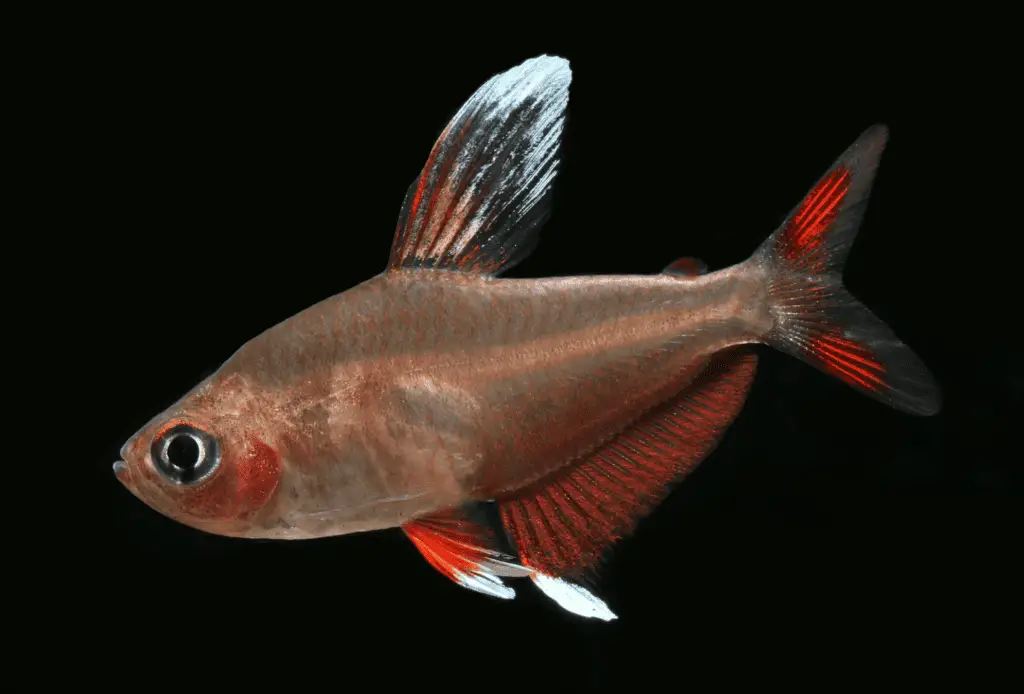
Aquarium Setup and Care
When setting up an aquarium for Red Tetras, it is crucial to ensure that the environment is suitable for these beautiful and delicate fish. We recommend a minimum tank size of 10 gallons, with a temperature range of 74-79°F (23-26°C) and a pH of 6.0-7.5.
In addition to this, we advise providing ample hiding spots and plants for the Red Tetras to feel secure. Good plant choices include Amazon Swords and Java Ferns. Furthermore, maintain a gentle water flow to mimic their natural habitat.
It is essential to invest in proper filtration and perform regular water changes to maintain optimal water quality. Aim for 25% water change once every two weeks.
Red Tetras thrive on a varied diet, including high-quality tropical flakes, micro pellets, and live or frozen foods such as brine shrimp and daphnia. Feed them small amounts twice a day, ensuring they consume all the food within a few minutes. This feeding routine will help maintain their vibrant coloration and promote overall well-being.
When introducing Red Tetras to the aquarium, it is wise to follow the standard acclimation process for tropical fish. Start by floating the bag containing the fish on the tank’s surface for 10-15 minutes, then gradually add small amounts of tank water to the bag for another 30 minutes before releasing the fish into their new home.
Finally, keep an eye on your Red Tetras for signs of illness or stress. Swift actions can make a significant difference in their health and wellbeing. Stay consistent with the care routine, and you’ll be successful in maintaining a thriving environment for your Red Tetras.
Red Tetra Species Varieties
Red Tetras, known scientifically as Hyphessobrycon, are a genus of small freshwater fish native to South America. In this section, we will discuss a few of the different species varieties within the Red Tetra family.
Hyphessobrycon erythrostigma, commonly known as the Bleeding Heart Tetra, is one of the most famous species. Its name comes from the red marking resembling a blood spot on the side of its body. These fish are a peaceful species and prefer to be in schools, making them a popular choice for community aquariums.
Another interesting species is the Hyphessobrycon flammeus, or Flame Tetra. As the name suggests, these fish have a fiery red color that is especially vibrant in males. They, too, are a peaceful, schooling species that is well-suited for community tanks.
The Hyphessobrycon amandae, or Ember Tetra, is smaller in size and has a captivating orange-red hue that intensifies with the quality of their diet and the condition of their environment. These little gems are also quite friendly and make great additions to peaceful community tanks.
Hyphessobrycon rosaceus, or Rosy Tetra, is a pretty, pinkish species with subtle yet attractive color patterns. Known for their calm demeanor and preference for slow-moving waters, they are a great option for aquarists looking to add a peaceful schooling fish to their tanks.
Lastly, the Hyphessobrycon megalopterus, or Black Phantom Tetra, is a fascinating species to observe, with males displaying an extended dorsal fin. Although their base color is more of a silver-grey, they show beautiful red accents that become more pronounced during the spawning season.
In conclusion, Red Tetras are available in a diverse range of species, each with its own distinctive features and attractive coloration. These peaceful fish make excellent additions to community aquariums and are sure to delight both novice and experienced aquarists alike.
Conservation and Threats
As we discuss Red Tetras, it’s important to consider their conservation status and the potential threats they face. These small, brightly colored fish are popular among aquarium hobbyists, and they play a crucial ecological role in their native South American habitats. To protect these beautiful creatures and ensure they thrive for years to come, we need to be aware of the challenges they encounter.
One pressing issue in the conservation of Red Tetras is habitat loss. As human activities such as deforestation and pollution threaten their natural environments, these fish face a decline in suitable living conditions. Specifically, their freshwater habitats, such as streams and tributaries across Guyana, Suriname, and Brazil, are increasingly at risk. Deterioration of water quality due to mining activities, run-off from agriculture, and urban waste further negatively affect Red Tetras and other aquatic species.
Another potential threat to Red Tetras is over-collection for the aquarium trade. Their striking appearance and peaceful nature make them a highly sought-after species for home aquariums. While it’s vital to maintain ethical and sustainable practices within the pet trade, we recognize that a greater effort should be made to promote captive breeding as an alternative to wild-caught individuals. This way, we can uphold our love for Red Tetras without jeopardizing their wild populations.
Given the risks that Red Tetras face, it’s also necessary to investigate their current conservation status. Fortunately, at this time, Red Tetras are not listed as endangered or threatened according to the International Union for Conservation of Nature’s (IUCN) Red List. However, this does not mean that we should become complacent in our efforts. Instead, we should continue monitoring Red Tetra populations and promoting responsible fishkeeping practices to ensure their long-term survival.
In conclusion, being mindful of the conservation concerns and potential threats that Red Tetras face can help us better protect these captivating fish. By advocating for habitat preservation, sustainable fishing practices, and thoughtful aquarium care, we can contribute to the ongoing success and well-being of Red Tetras in the wild and within our homes.
Frequently Asked Questions
What is the ideal tank size for Red Tetras?
The ideal tank size for Red Tetras is at least 20 gallons. This allows enough space for a small group of these schooling fish to swim freely and comfortably. A larger tank would be even better, as it provides a more stable environment and reduces stress for the fish.
What are suitable tank mates for Red Minor Tetras?
Red Minor Tetras can live peacefully with other small, peaceful fish species such as other tetras, rasboras, and livebearers like guppies and mollies. In addition, they can coexist with bottom-dwelling fish like Cory catfish and Otocinclus. Be cautious when pairing them with larger or more aggressive species, as they may become prey.
Are Redeye Tetras prone to aggression?
Redeye Tetras are generally peaceful fish that enjoy the company of other similarly-sized fish. However, they may sometimes become aggressive or nippy towards smaller fish, especially those with long, flowing fins. To minimize aggression, keep Redeye Tetras in a school of at least 6 individuals and provide an environment with plenty of plants and hiding spaces.
What is the average lifespan of a Red Eye Tetra?
The average lifespan of a Red Eye Tetra is around 3 to 5 years. However, with proper care and a well-maintained aquarium, they can occasionally live up to 8 years.
How can you differentiate between male and female Red Eye Tetras?
Male Red Eye Tetras typically have slimmer bodies and are more colorful than females, with a more intense red coloration on their fins and tails. Females tend to be a bit larger and exhibit a more rounded body shape, especially when full of eggs.
How do you properly care for a Red Skirt Tetra?
To properly care for a Red Skirt Tetra, we recommend providing a well-filtered aquarium with stable water parameters, maintaining a temperature between 72-78°F, and keeping the pH around 6.0-7.5. Feed them a balanced diet of high-quality fish flakes or pellets, along with occasional live or frozen foods such as brine shrimp and daphnia. Ensure that they have plenty of hiding places and swimming space, as well as a suitable group of tank mates.
